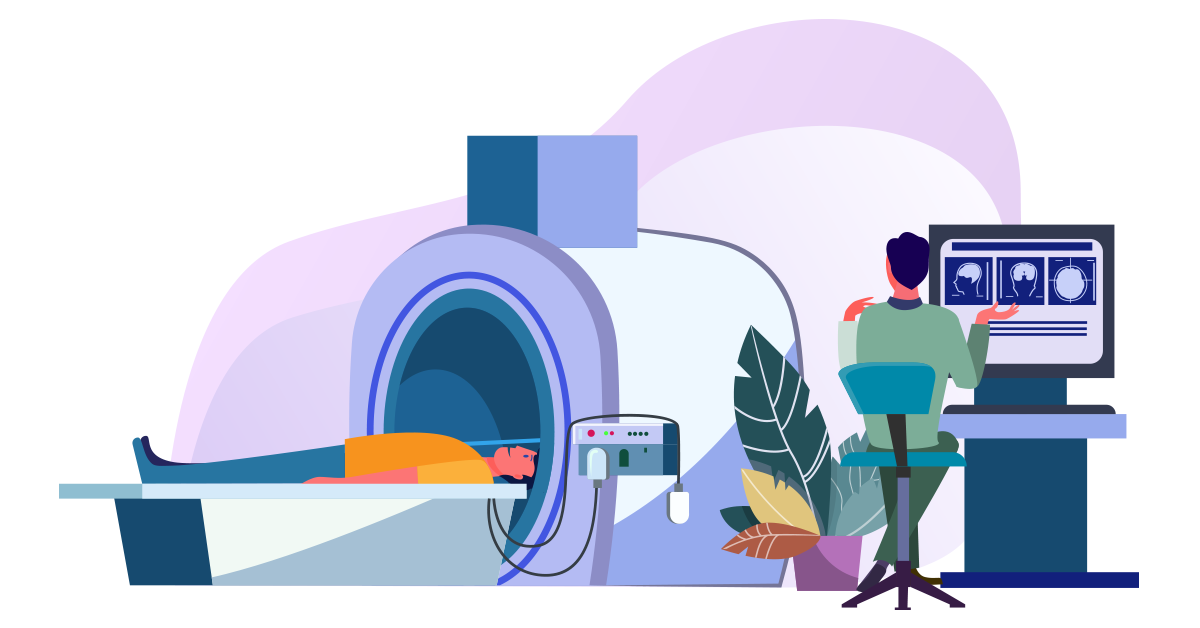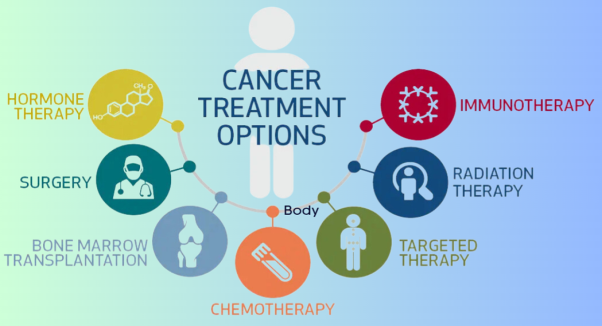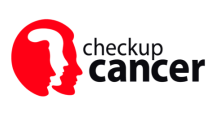WHAT ARE THE MAIN TREATMENT OPTIONS FOR CANCER AND HOW DO THEY WORK?

Cancer is a group of diseases that involve abnormal cell growth with the potential to invade or spread to other parts of the body. Cancer can affect any organ or tissue in the human body and can cause various symptoms depending on the type and stage of cancer. Cancer is one of the leading causes of death worldwide, but thanks to advances in medical research and technology, many cancers can be treated successfully if detected early.
There are many types of cancer treatment available today, and the choice of treatment depends on several factors, such as:
– The type and stage of cancer
– The location and size of the tumor
– The patient’s age, general health and preferences
– The possible benefits and risks of each treatment option
Some people with cancer may have only one type of treatment, while others may have a combination of treatments, such as surgery, chemotherapy, radiation therapy, immunotherapy, hormone therapy, etc. The main goal of cancer treatment is to cure the cancer or to control it and prevent it from spreading or causing symptoms. Sometimes, when a cure is not possible, the treatment may aim to improve the quality of life of the patient by relieving pain and other symptoms.
In this article, we will discuss some of the main types of cancer treatment and how they work.

## Surgery
Surgery is a procedure in which a surgeon removes cancer or as much of it as possible from the body. Surgery is often used to diagnose cancer by taking a biopsy (a sample of tissue) for testing in the laboratory. Surgery can also be used to:
– Remove all or part of a tumor that is causing pain or pressure
– Remove nearby lymph nodes that may be affected by cancer
– Remove organs or tissues that are damaged by cancer or that may become cancerous in the future
– Reconstruct or restore the appearance or function of a body part after cancer surgery
Surgery can be performed using different techniques, such as open surgery (in which a large incision is made), laparoscopic surgery (in which small incisions are made and a thin tube with a camera and instruments is inserted), robotic surgery (in which a surgeon controls a robotic arm that performs the surgery), etc.
The benefits of surgery may include:
– Removing or reducing the size of the tumor
– Improving the chances of curing or controlling the cancer
– Relieving symptoms and improving quality of life
The risks of surgery may include:
– Bleeding
– Infection
– Damage to nearby organs or tissues
– Pain
– Scarring
– Side effects from anesthesia
– Complications from healing or recovery
## Chemotherapy
Chemotherapy is a type of cancer treatment that uses drugs to kill cancer cells or stop them from growing and dividing. Chemotherapy can be given orally (by mouth), intravenously (through a vein), intramuscularly (into a muscle), subcutaneously (under the skin), intrathecally (into the spinal fluid), intra-arterially (into an artery), intraperitoneally (into the abdominal cavity), intrapleurally (into the chest cavity), intravesically (into the bladder), topically (on the skin), etc.
Chemotherapy can be used to:
– Shrink a tumor before surgery or radiation therapy
– Destroy any remaining cancer cells after surgery or radiation therapy
– Control or slow down the growth of advanced or metastatic cancer
– Relieve symptoms caused by cancer
Chemotherapy can be given as a single drug or as a combination of drugs. The drugs can be given in cycles, with periods of treatment followed by periods of rest. The duration and frequency of chemotherapy depend on the type and stage of cancer, the goals of treatment, the response to treatment, and the side effects experienced by the patient.
The benefits of chemotherapy may include:
– Killing or slowing down the growth of cancer cells
– Improving the chances of curing or controlling the cancer
– Relieving symptoms and improving quality of life
The risks of chemotherapy may include:
– Damage to normal cells that divide rapidly, such as those in the bone marrow, hair follicles, digestive tract, etc.
– Nausea, vomiting, diarrhea, constipation, loss of appetite, weight loss
– Hair loss
– Fatigue, anemia, infection, bleeding, bruising
– Mouth sores, dry mouth, taste changes
– Nerve damage, numbness, tingling, pain
– Kidney damage, bladder irritation, blood in urine
– Heart damage, irregular heartbeat, chest pain
– Liver damage, jaundice, hepatitis
– Allergic reactions, fever, chills, rash
– Infertility, sexual dysfunction, early menopause
– Increased risk of developing secondary cancers
## Radiation therapy
Radiation therapy is a type of cancer treatment that uses high-energy rays or particles to kill cancer cells or damage their DNA. Radiation therapy can be delivered externally (from a machine outside the body) or internally (from a radioactive source inside the body). Radiation therapy can also be given systemically (through the bloodstream) using radioactive drugs.
Radiation therapy can be used to:
– Destroy a tumor or reduce its size before surgery or chemotherapy
– Destroy any remaining cancer cells after surgery or chemotherapy
– Control or slow down the growth of advanced or metastatic cancer
– Relieve symptoms caused by cancer
Radiation therapy can be given alone or in combination with other treatments, such as surgery, chemotherapy, immunotherapy, etc. The dose and schedule of radiation therapy depend on the type and stage of cancer, the location and size of the tumor, the goals of treatment, the response to treatment, and the side effects experienced by the patient.
The benefits of radiation therapy may include:
– Killing or slowing down the growth of cancer cells
– Improving the chances of curing or controlling the cancer
– Relieving symptoms and improving quality of life
The risks of radiation therapy may include:
– Damage to normal cells that are exposed to radiation, such as those in the skin, hair, eyes, mouth, throat, lungs, heart, etc.
– Skin changes, such as redness, dryness, itching, peeling, blistering
– Hair loss
– Fatigue
– Nausea, vomiting, diarrhea, constipation
– Mouth sores, dry mouth, taste changes
– Difficulty swallowing, hoarseness
– Coughing, shortness of breath
– Chest pain
– Bladder irritation, urinary frequency or urgency
– Sexual dysfunction
– Infertility
– Lymphedema (swelling caused by fluid buildup)
– Bone loss or fracture
– Increased risk of developing secondary cancers
## Immunotherapy
Immunotherapy is a type of cancer treatment that helps your immune system fight cancer. The immune system is a network of cells and organs that protect your body from infections and diseases. Sometimes, the immune system fails to recognize or attack cancer cells because they are similar to normal cells or because they have ways to evade or suppress the immune response. Immunotherapy aims to boost or restore the immune system’s ability to fight cancer.
Immunotherapy can be given in different ways, such as:
– Monoclonal antibodies: These are laboratory-made proteins that can bind to specific targets on cancer cells or on immune cells and trigger an immune response against them. For example,
– Some monoclonal antibodies block checkpoints (molecules that act as brakes on the immune system) and unleash the immune cells to attack cancer cells. These are called checkpoint inhibitors.
– Some monoclonal antibodies carry toxins or radioactive substances that can kill cancer cells when they bind to them. These are called antibody-drug conjugates or radioimmunotherapy.
– Some monoclonal antibodies block the growth factors (molecules that stimulate cell growth) that cancer cells need to survive and grow. These are called growth factor inhibitors.
– Some monoclonal antibodies stimulate the immune system to produce more antibodies against cancer cells. These are called bispecific antibodies.
– Cancer vaccines: These are substances that can stimulate the immune system to recognize and attack specific antigens (molecules that trigger an immune response) on cancer cells. For example,
– Some cancer vaccines are made from killed or weakened cancer cells or from parts of cancer cells that contain antigens.
– Some cancer vaccines are made from dendritic cells (immune cells that present antigens to other immune cells) that are loaded with antigens from the patient’s own tumor.
– Some cancer vaccines are made from viruses or bacteria that carry antigens from cancer cells.
– Cell-based therapies: These are treatments that use living cells to fight cancer. For example,
– Some cell-based therapies use T cells (a type of white blood cell that can kill infected or abnormal cells) that are collected from the patient’s blood and genetically modified in the laboratory to recognize and attack specific targets on cancer cells. These are called chimeric antigen receptor (CAR) T-cell therapy or T-cell receptor (TCR) therapy.
– Some cell-based therapies use natural killer (NK) cells (a type of white blood cell that can kill infected or abnormal cells without prior sensitization) that are collected from the patient’s blood or from a donor and activated in the laboratory to enhance their ability to kill cancer cells more effectively. These are called NK cell therapy.
– Cytokines: These are molecules that regulate the activity and growth of immune cells. Some cytokines can stimulate the immune system to fight cancer, while others can suppress it. For example,
– Some cytokines can enhance the ability of T cells or NK cells to kill cancer cells. These are called interleukins or interferons.
– Some cytokines can block the signals that cancer cells use to evade or suppress the immune system. These are called tumor necrosis factor or transforming growth factor beta.
Immunotherapy can be used to treat various types of cancer, such as melanoma, lung cancer, kidney cancer, bladder cancer, head and neck cancer, lymphoma, leukemia, etc.
The benefits of immunotherapy may include:
– Boosting or restoring the immune system’s ability to fight cancer
– Improving the chances of curing or controlling the cancer
– Relieving symptoms and improving quality of life
– Having fewer or milder side effects than other treatments
The risks of immunotherapy may include:
– Causing the immune system to attack normal cells or organs, resulting in inflammation or autoimmune diseases
– Allergic reactions, fever, chills, rash
– Fatigue, nausea, diarrhea
– Liver damage, hepatitis
– Kidney damage, nephritis
– Lung damage, pneumonitis
– Endocrine disorders, such as thyroiditis or diabetes
– Neurological disorders, such as meningitis or encephalitis
## Hormone therapy
Hormone therapy is a type of cancer treatment that slows or stops the growth of cancers that use hormones to grow. Hormones are substances that are produced by glands in the body and circulate in the bloodstream. They can affect the growth and function of various organs and tissues. Some cancers depend on hormones to grow and survive, such as breast cancer and prostate cancer.
Hormone therapy can be given in different ways, such as:
– Hormone-blocking drugs: These are drugs that prevent hormones from reaching cancer cells or from being produced by the body. For example,
– Some hormone-blocking drugs block the action of estrogen (a female hormone) on breast cancer cells. These are called selective estrogen receptor modulators (SERMs) or aromatase inhibitors (AIs).
– Some hormone-blocking drugs block the action of testosterone (a male hormone) on prostate cancer cells. These are called anti-androgens or luteinizing hormone-releasing hormone (LHRH) agonists or antagonists.
– Hormone-suppressing drugs: These are drugs that lower the levels of hormones in the body by interfering with their production or release. For example,
– Some hormone-suppressing drugs stop the ovaries from producing estrogen in women. These are called ovarian ablation drugs or chemical oophorectomy (removal of ovaries).
– Some hormone-suppressing drugs stop the testicles from producing testosterone in men. These are called orchiectomy (removal of testicles) or chemical castration.
– Hormone-addition drugs: These are drugs that add hormones to the body to counteract the effects of cancer or its treatment. For example,
– Some hormone-addition drugs add estrogen to women who have low estrogen levels due to menopause or ovarian ablation. This can help relieve symptoms such as hot flashes, vaginal dryness, etc.
– Some hormone-addition drugs add testosterone to men who have low testosterone levels due to orchiectomy or chemical castration. This can help relieve symptoms such as fatigue, loss of muscle mass, sexual dysfunction, etc.
Hormone therapy can be used to treat various types of cancer, such as breast cancer, prostate cancer, endometrial cancer, ovarian cancer, thyroid cancer, etc.
The benefits of hormone therapy may include:
– Slowing or stopping the growth of hormone-sensitive cancers
– Improving the chances of curing or controlling the cancer
– Relieving symptoms and improving quality of life
The risks of hormone therapy may include:
– Causing side effects related to changes in hormone levels in the body
– Menopausal symptoms, such as hot flashes, night sweats, mood swings
– Osteoporosis (bone loss), fractures
– Cardiovascular problems, such as blood clots, stroke, heart attack
– Sexual dysfunction, infertility
– Weight gain
– Increased risk of developing other cancers
## Other types of cancer treatment
Besides surgery, chemotherapy, radiation therapy, immunotherapy and hormone therapy, there are other types of cancer treatment that may be used for some patients depending on their specific situation. Some examples are:
– Hyperthermia: This is a type of treatment that heats up body tissue to high temperatures (up to 113 °F) to help damage and kill cancer cells with little or no harm to normal tissue. Hyperthermia can be applied locally (to a specific area of the body), regionally (to a larger area of the body) or whole-body (to the entire body). Hyperthermia can be used alone or in combination with other treatments, such as chemotherapy or radiation therapy.
– Photodynamic therapy: This is a type of treatment that uses a drug activated by light to kill cancer and other abnormal cells. The drug is injected into the bloodstream or applied to the skin and accumulates in the cancer cells. Then, a special light source is used to activate the drug, which produces a chemical reaction that destroys the cancer cells. Photodynamic therapy can be used to treat some types of skin cancer, lung cancer, esophageal cancer, etc.
– Stem cell transplant: This is a procedure that restores stem cells that grow into blood cells in people who have had theirs destroyed by high doses of chemotherapy or radiation therapy. Stem cells are immature cells that can develop into different types of blood cells, such as red blood cells, white blood cells and platelets. Stem cell transplant can be autologous (using the patient’s own stem cells) or allogeneic (using stem cells from a donor). Stem cell transplant can be used to treat some types of blood cancers, such as leukemia, lymphoma, myeloma, etc.
## Conclusion
Cancer treatment is a complex and evolving field that offers many options for patients with different types and stages of cancer. The choice of treatment depends on many factors and requires careful discussion with the doctor and the health care team. The main goal of cancer treatment is to cure the cancer or to control it and prevent it from causing harm or symptoms. Sometimes, when a cure is not possible, the treatment may aim to improve the quality of life of the patient by relieving pain and other symptoms. Cancer treatment can have benefits and risks that vary depending on the type and stage of cancer, the type and dose of treatment, and the individual response of the patient. Therefore, it is important to understand the potential outcomes and side effects of each treatment option and to weigh them against each other.

